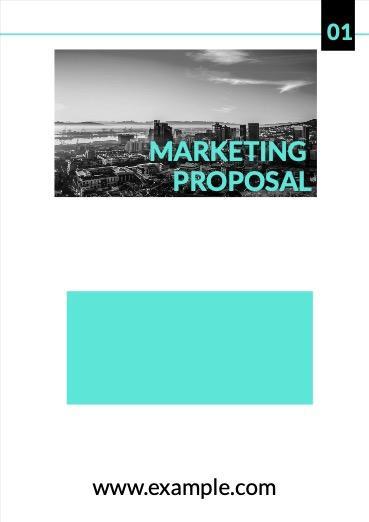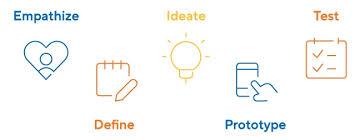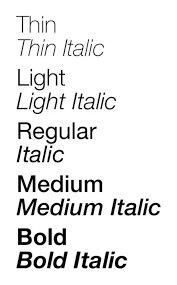Mastering Persuasion & Its Tricks for Captivating Proposal Templates
Writing a persuasive proposal can be an incredibly daunting challenge, regardless of the specific industry you are in. You may invest a significant amount of time and effort into developing and refining your products and services. However, if you lack the know-how to effectively pitch these offerings to potential customers, all that effort might go to waste.
The crux of the matter lies in crafting proposals that are not only persuasive but also backed by thorough research, emphasised by the value you bring, and displaying a professional demeanour. So, if you are a content writer, this article is here to guide you in creating the quintessential business proposal. Let us take you through the ins and outs of how you can create a persuasive business proposal that not only communicates your ideas with clarity but also succeeds in converting mere prospects into loyal clientele.
The plethora of information available online can often feel overwhelming, and this is especially true when you are faced with the task of creating business proposals. It is understandable if you are left with a sense of apprehension. However, here is the silver lining: you will discover a myriad of proposal templates at your disposal. Once you discover the template that resonates perfectly, you will realise that the requisite structure is already laid out for you. Within this structure, the key to an effective persuasive presentation is the emphasis on the lasting value you bring to your client’s table.
For instance, if you happen to be a copywriter, your focus must surpass the temporal aspect of how long it takes to write the necessary content. Instead, it should zero in on the lasting value your content yields over time. It is of paramount importance to grasp that you are not merely selling website content. You must know that you are providing the very substance that summons new buys, aids in a loyal customer base, and results in higher rankings on search engines.
To make this potential visible within your proposal, you must begin by explaining the problem at hand and the desired outcomes, all communicated in terms that resonate with your client’s perspective. This ensures a harmonious understanding between both parties. Subsequently, delve into the finer intricacies of your approach. Articulate the potential value your service gives to the client, ideally verified by a successful case study you have drawn from a previous client’s experience.
And now, with a solid foundation in place, let us explore diverse persuasive techniques and their pragmatic application in the realm of proposal writing. These techniques serve to magnify your expertise in effectively communicating your proposal’s inherent value, easing potential concerns, and ultimately fostering the trust necessary for client commitment.

The Power of Emotional Appeal
Proposal writing is an essential skill for anyone who wants to persuade others to take action. While logical reasoning is crucial, emotional appeal is equally important in creating a solid connection between the proposal and the reader. Let us look into ways in which evoking emotions can help you as a content writer in injecting emotions effectively into your proposals.
Testing your approach: If you are unsure how much emotion, context, and proof will help you resonate with your audience, you can simply test it. You can add an “A OR B” test to your landing page, which features two different versions of your copy. Swap out the case studies in your proposals and wait for the results. The only way to know what works is to try different approaches and see what resonates with your audience
Storytelling: This is a powerful way to evoke emotions in readers. By telling a story that explains the problem your proposal is trying to solve, you can help readers connect with the issue on an emotional level. For example, if you propose a new program to help underprivileged children, you could tell a story about a child who has benefited from a similar program.
Using vivid language: The use of vivid language can help readers visualise the impact of your proposal. For example, instead of saying, “Our program will help children learn to read,” you could say, “Our program will open up a world of possibilities for children who have never had access to books before.”
Tapping into the reader’s desires: Understanding what motivates your readers can help you craft a proposal that speaks to their desires. For example, if you are proposing a new product, you could highlight how it will make their lives easier or save them time.
Balancing emotion with logic: While emotional appeal is important, it is crucial to balance it with logical reasoning. A proposal that is too emotional can come across as manipulative or insincere. By using a combination of emotional appeal and logical reasoning, you can create a well-rounded and compelling case.
Building Trust and Credibility
Trust and credibility are crucial in winning over clients through proposals. By building trust, proposal writers can instil confidence in their readers, increasing the likelihood of acceptance. To help you understand this segment better, let us delve into some strategies for showcasing expertise, providing evidence of past successes, and incorporating testimonials or case studies.
Provide clear and concise information: Giving clear and concise information is essential in building trust and credibility. As a writer, you should ensure your proposals are well-organised, easy to read, and error-free. You should also provide clear information about the proposal, including timelines, budgets, and deliverables.
Demonstrate expertise: Demonstrating expertise is essential in building trust and credibility. As a proposal writer, you should highlight your qualifications, experience, and knowledge in the field. You can do this by including a brief bio or resume in the proposal, highlighting relevant experience, and showcasing any relevant certifications or awards.
Provide evidence of past successes: Providing proof of past achievements is another way to build trust and credibility. As a proposal writer, you should include case studies, testimonials, or other evidence demonstrating your ability to deliver results. You can do this by showcasing previous projects, highlighting key metrics, and providing references from satisfied clients.
Incorporate testimonials or case studies: Including testimonials, case studies, or references is a powerful way to build trust and credibility. As a proposal writer, it would help to include quotes from satisfied clients, highlighting the benefits they received from your writing services. Case studies can also be included, showcasing your ability to deliver results in a specific area.
Use emotional appeal: While logical reasoning is important, emotional appeal can also be effective in building trust and credibility. By tapping into the reader’s desires and emotions, you, as a proposal writer, can create a stronger connection with your readers. You can do so by using vivid language, telling stories, and highlighting the emotional benefits of the proposal.

The Art of Framing and Anchoring
Framing and anchoring are psychological concepts that can be applied to proposal writing to influence the reader’s perception positively. So, let us delve into some strategies for presenting information in a way that influences the reader’s perception positively and how anchoring techniques can be used to anchor the reader’s decision-making process in favour of the proposal:
Framing: This is the way information is presented to the reader. As a proposal writer, you can use framing to influence the reader’s perception positively. For example, instead of presenting the proposal as a cost, it can be framed as an investment that will yield significant returns.
Anchoring: This is a technique that involves presenting a reference point to the reader that influences their decision-making process. As a proposal writer, you can use anchoring to anchor the reader’s decision-making process in favour of the proposal. For example, by presenting a high price point for a similar product or service, you can anchor the reader’s perception of the proposal’s value.
Use emotional appeal: Adding an emotional appeal can be effective in framing and anchoring the reader’s perception positively. By tapping into the reader’s emotions, you, as a proposal writer, can create a stronger connection with your readers. You can do this by making use of vivid language, telling stories, and highlighting the emotional benefits of the proposal, as mentioned previously.
- Provide clear and concise information: If you provide clear and concise information, you can frame and anchor the reader’s perception positively. As we discussed earlier, as a proposal writer, you must ensure that your proposals are organised well, cohesive effortless to read, and free of errors. It would also help if you provide clear information about the proposal, which is inclusive of the timelines, budgets, and deliverables.
- Highlight unique selling points: Highlighting unique selling points is another way to frame and anchor the reader’s perception positively. As a proposal writer, you should highlight the unique benefits of your proposal, such as cost savings, increased efficiency, or improved quality.

Table of contents:
- ● Mastering Persuasion & Its Tricks for Captivating Proposal Templates
- ● The Power of Emotional Appeal
- ● Building Trust and Credibility
- ● The Art of Framing and Anchoring
- ● Creating a Sense of Urgency
- ● Applying Social Proof
- ● Overcoming Objections and Fears
- ● Elevating Freelance Content Writers’ Proposals Through Persuasion
Creating a Sense of Urgency
Instilling a feeling of urgency can be a powerful motivator in persuading clients to take action on a proposal promptly. By using tactics such as time-sensitive offers, limited-time discounts, emphasising the consequences of delay, using emotional appeal, and providing clear and concise information, you, as a proposal writer, can craft compelling calls to action that motivate clients to take action quickly. It is crucial to avoid manipulative techniques and focus on creating a sense of urgency that is genuine and beneficial for both parties. Let us look into some tactics for creating a sense of urgency without resorting to manipulative techniques:
- Emphasise the consequences of delay: Highlighting the consequences of delay can be an effective way to create a sense of urgency. As a proposal writer, you can highlight the negative impact that delay could have on the client’s business or project. This can motivate clients to take action quickly to avoid negative consequences.
- These offers are a great way to create a sense of urgency. As a proposal writer, you can craft content that offers discounts or bonuses for clients who sign up within a specific timeframe. This can motivate clients to take action quickly.
- Time-based discounts are another way to create a sense of urgency. As a proposal writer, you can offer a discount that is only available for a short period. This can motivate clients to take action before the discount expires.

Applying Social Proof
Social proof is a concept that significantly impacts the decision-making process of potential clients. By incorporating social proof elements into proposals, such as client success stories, testimonials, or industry recognition, writers can bolster the credibility of their proposals and increase the likelihood of acceptance and successful outcomes. Let us see how you can apply social proof to proposal writing:
Client success stories: Including client success stories in proposals can showcase the positive outcomes that previous clients have experienced. These stories provide real-life examples of how the proposal can benefit the reader, increasing their confidence in the writer’s ability to deliver results.
Testimonials: Adding testimonials from satisfied clients can serve as powerful social proof. You can include quotes or excerpts from clients who have had a positive experience working with you. These testimonials highlight your writing expertise, reliability, and the value you bring to the table.
Industry recognition: Incorporating industry recognition, such as awards or certifications, can enhance credibility. As a writer, you can mention any accolades you have received or organisations you are affiliated with to demonstrate your expertise and standing within the industry.
- Case studies: Incorporating case studies provides detailed accounts of how you have solved a specific problem or achieved desired outcomes in your capacity as a proposal writer. By presenting concrete evidence of past successes, you can showcase your ability to deliver results and build trust with potential clients.
- Social media engagement: As a writer, you can leverage social media engagement as social proof by mentioning the number of followers, likes, or shares you have received. This demonstrates that you have a solid online presence and a loyal following, further enhancing your credibility.

Overcoming Objections and Fears
When it comes to addressing potential objections and fears that clients may have, being an effective proposal writer, you must understand the importance of pre-emptively handling these worries. By anticipating common concerns and offering persuasive counterarguments or reassurances, you can instil greater confidence in the client’s mind and increase the likelihood of acceptance. You can achieve this by proactively addressing concerns, providing relevant evidence, addressing risk mitigation, incorporating client testimonials, and highlighting expertise. So, let us look into the strategies that will allow you as a proposal writer to craft compelling proposals that not only address client concerns but also build trust:
- Identify potential objections: Being a proposal writer, you should put yourself in the client’s shoes and anticipate any objections or fears that may arise. This could include concerns about cost, implementation, or potential risks. Once you identify these objections, you can proactively address them in your proposals.
- Provide relevant evidence: To counter objections, as a proposal writer, you should provide appropriate evidence that works in support of your claims. This could include data, statistics, or case studies that demonstrate how effective your proposed solution can be. If you offer concrete evidence, it becomes easy to alleviate doubts and build credibility.
- Address risk mitigation: Your clients may have concerns about potential risks associated with the proposal. Thus, as a proposal writer, you should be ready to address these concerns by outlining risk mitigation strategies or contingency plans. If you demonstrate that you have considered and planned for potential risks, you can alleviate the fears your potential clients may have and build trust with them.
- Incorporate client testimonials: Including client testimonials in the proposal can be a powerful way to address concerns and build trust. Adding testimonials from clients who were satisfied with your services can provide social proof and demonstrate your track record of success as a writer. If you showcase positive experiences, as a writer, you can alleviate doubts and instil confidence in your potential client.
- Highlight expertise and qualifications: Being a proposal writer, it is vital for you to emphasise your expertise and capabilities to address concerns about your ability to deliver. This could include highlighting relevant experience, certifications, or industry recognition. By showcasing your expertise, you can build credibility and ease doubts

Elevating Freelance Content Writers’ Proposals Through Persuasion
In the realm of freelance content writing, mastering the art of persuasion emerges as a pivotal skill, one that can markedly enhance the impact of proposals and secure an abundance of projects. Delving into the nuances of psychological persuasion and implementing strategic approaches becomes the foundation of success for writers aspiring to draw in new clients. The amalgamation of these diverse psychological techniques holds undeniable significance, forming the base of persuasion’s ability.
By astutely preventing predictable concerns and adeptly weaving in compelling counterarguments and reassurances, writers proficiently instil a strong sense of assurance within the clients. Beyond this, infusing elements of social proof, whether through narratives of client accomplishments, testimonials that resonate, or acknowledgements within the industry, profoundly strengthens the credibility of proposals, thereby swaying potential clients toward their offerings.
Instilling a sense of urgency, adroitly addressing potential reservations and anxieties, and deftly employing emotional intelligence to craft narratives that resonate all converge to mould proposals that are magnetic and impactful. Once honed to mastery, these techniques amplify the prospects of freelance content writers, propelling them towards procuring clients and clinching projects, thereby scripting a narrative of unprecedented triumph in their professional journey. In summation, the journey to proficiency in these techniques heralds elevated successes for freelance content writers, ushering them into a realm of flourishing careers and growing accomplishments.

Rahul Shevde


